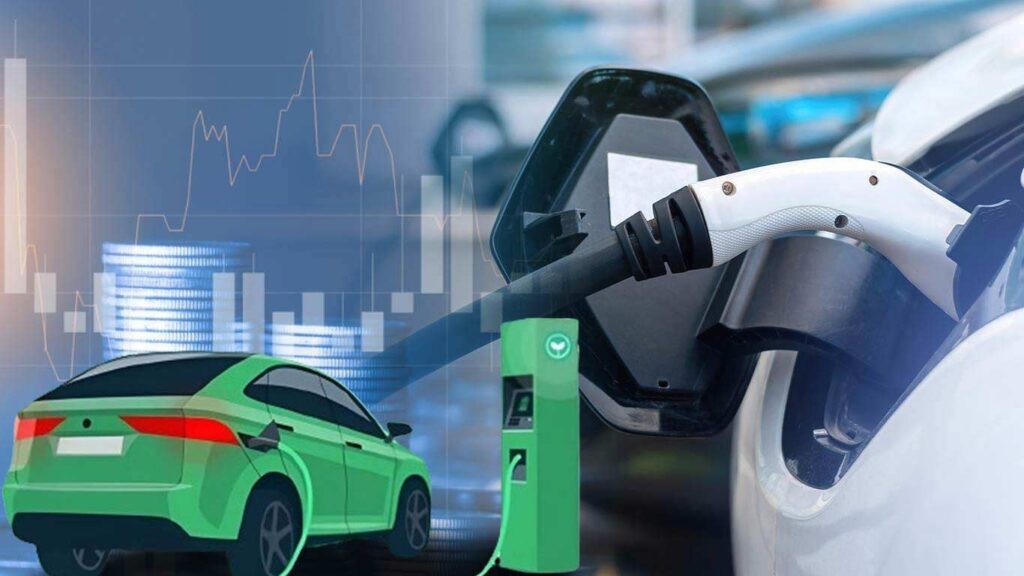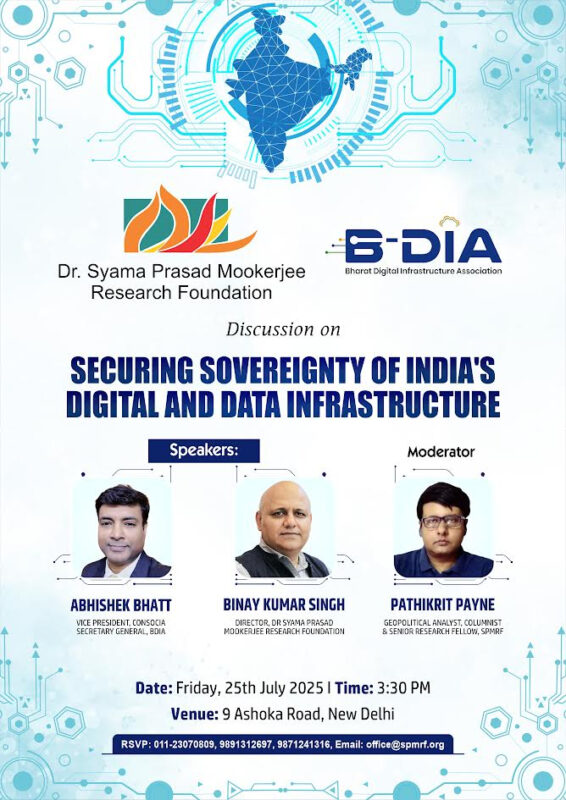In a landmark move to transform India into a global electric vehicle (EV) manufacturing hub, the Ministry of Heavy Industries (MHI) has officially launched the application portal for the Scheme to Promote Manufacturing of Electric Passenger Cars in India (SPMEPCI). This ambitious initiative, approved by the Government of India under the leadership of Prime Minister Shri Narendra Modi, is a strategic component of India’s broader vision for sustainable development, economic self-reliance, and global technological leadership.
SPMEPCI: Gateway to a New EV Era
In a landmark move to transform India into a global hub for electric vehicle (EV) manufacturing, the Government of India launched the Scheme to Promote Manufacturing of Electric Passenger Cars in India (SPMEPCI). Officially notified on 15th March 2024, and operationalized with detailed implementation guidelines issued on 2nd June 2025 (Notification No. S.O. 2450(E)), the scheme reflects a bold and forward-looking approach to accelerating India’s transition toward sustainable mobility. The government has opened the application portal (spmepci.heavyindustries.gov.in) to receive proposals from global and domestic automotive giants. Applications are being accepted between 24th June 2025 and 21st October 2025. The window offers an opportunity for leading EV manufacturers to participate in shaping India’s next-generation mobility ecosystem, while benefiting from a suite of policy incentives and regulatory clarity.
At the core of SPMEPCI is the objective to build a vibrant and competitive EV manufacturing ecosystem within India. To this end, the scheme mandates a minimum investment of ₹4,150 crore per approved applicant, ensuring that only serious and committed players are onboarded. This investment will not only enhance domestic production capacities but also create employment, upskill the workforce, and foster technological collaboration across the value chain. To catalyze early market penetration and facilitate technology transfer, the scheme provides for customs duty concessions on a limited number of high-value electric vehicle imports. This incentive is strategically designed to allow companies to test and build their market presence in India while simultaneously setting up local manufacturing facilities. Such a mechanism helps strike a balance between opening up the market and safeguarding long-term indigenous interests.
A unique feature of the scheme is its emphasis on Domestic Value Addition (DVA) targets. These targets ensure that over time, companies must increase the proportion of components and systems manufactured locally, encouraging the development of a deep domestic supply chain. The focus on DVA is aligned with India’s broader goals of self-reliance and global competitiveness in the green mobility sector. SPMEPCI is more than just an industrial incentive program, it is a strategic gateway into a new era of clean, green, and globally competitive mobility. By blending global capital with local capability, the scheme promises to redefine India’s role in the global electric vehicle landscape, positioning it not just as a consumer market but as a formidable manufacturing base for the world.
Key Features of the Scheme
The Scheme to Promote Manufacturing of Electric Passenger Cars in India (SPMEPCI) introduces a set of well-calibrated features aimed at balancing short-term market incentives with long-term industrial development. Each component of the scheme has been thoughtfully designed to support global and domestic manufacturers while ensuring that India builds a robust, self-reliant EV ecosystem.
One of the most attractive elements of the scheme is the import concession for Completely Built Units (CBUs) of electric four-wheelers. Manufacturers will be allowed to import EVs with a minimum Cost, Insurance, and Freight (CIF) value of $35,000 at a concessional customs duty rate of 15%, which is significantly lower than the prevailing rate of 70% to 100%. This reduced rate will be applicable for a period of five years. The purpose of this provision is to help approved applicants establish an initial customer base and brand presence in India, while concurrently setting up local manufacturing operations. To ensure that only serious, long-term players participate in the scheme, the government has set a minimum investment threshold of ₹4,150 crore, or approximately $500 million. This requirement signals a strategic commitment to capital-intensive capacity creation and deters opportunistic or low-scale ventures from entering the market under the scheme’s ambit.
Crucially, the scheme also lays down Domestic Value Addition (DVA) milestones, which are both mandatory and progressive in nature. Over the years, participants must meet increasing targets for local sourcing, component manufacturing, and value creation within India. These DVA requirements are intended to foster deep supply chain localization, encourage technology transfer, and build indigenous capability, not just in assembly, but across design, electronics, battery systems, and software integration. The application window for companies to express their interest and submit proposals is open from 24th June 2025 to 21st October 2025. This defined period provides ample time for potential applicants to prepare detailed investment and localization roadmaps, ensuring transparency and competitiveness in the selection process.
The long-term objective of SPMEPCI is to firmly position India as a trusted global EV manufacturing hub. Through a combination of incentives, regulatory support, and ecosystem development, the scheme aims to make India not just an attractive consumer market, but a pivotal player in the global electric mobility value chain.
Strategic Significance to Push Viksit Bharat @2047
The Scheme to Promote Manufacturing of Electric Passenger Cars in India (SPMEPCI) is more than a policy intervention, it is a strategic enabler of Prime Minister Narendra Modi’s vision of Viksit Bharat by 2047, a future-ready India that is economically strong, environmentally sustainable, and globally competitive. The scheme intersects with multiple national priorities, serving as a transformative force for India’s industrial, environmental, and technological future.
At the forefront is the goal of green mobility. By incentivizing the local manufacturing and adoption of electric vehicles, the scheme directly contributes to India’s broader climate commitments, including the ambitious target of achieving Net Zero carbon emissions by 2070, as announced at the COP26 summit in Glasgow. With transportation accounting for a significant share of urban pollution and fossil fuel consumption, a rapid shift to electric vehicles under this scheme will help reduce India’s carbon footprint while also decreasing dependency on imported crude oil. In terms of socio-economic impact, employment generation emerges as a major benefit. According to NITI Aayog projections, the EV industry has the potential to create over 10 million direct and indirect jobs by 2030, spanning sectors such as auto component manufacturing, battery production, charging infrastructure, software development, and maintenance services. SPMEPCI is designed to catalyze this employment surge by drawing in large-scale investments and promoting capacity building across the ecosystem.
Another key dimension of the scheme is its role in facilitating technology transfer and R&D development. By attracting leading global EV manufacturers to set up operations in India, the policy paves the way for the domestic industry, particularly Indian OEMs and Tier-1 suppliers to gain exposure to advanced electric vehicle platforms, engineering practices, and quality standards. This inflow of expertise is expected to elevate the innovation quotient of India’s auto sector and accelerate the localization of next-generation technologies, including solid-state batteries, power electronics, and vehicle telematics. On the investment front, the scheme is poised to unlock substantial foreign direct investment (FDI). With India’s EV market expected to attract over $20 billion in cumulative investments by 2030, SPMEPCI provides a clear and structured framework for global capital to flow into India’s green mobility transition. By offering predictability, regulatory support, and tariff incentives, the policy enhances India’s attractiveness as a long-term investment destination.
Crucially, the scheme aligns with the ethos of Atmanirbhar Bharat by mandating Domestic Value Addition (DVA) targets. These milestones will ensure that critical components, such as battery packs, electric motors, semiconductor modules, powertrains, and software systems, are increasingly sourced and manufactured within India. This focus on local supply chain development will reduce import dependence, strengthen strategic autonomy, and enable Indian firms to integrate into global value chains as competitive players. In essence, SPMEPCI is not just about making electric cars, it is about making India future-ready. It accelerates India’s journey toward energy security, economic self-reliance, environmental stewardship, and high-tech industrial capability. As the country marches toward 2047, this scheme stands as a vital building block in realizing the aspiration of a Viksit Bharat, prosperous, inclusive, and globally respected.
Why Global Giants Are Taking Notice
India’s electric vehicle (EV) sector is rapidly transforming from a promising market to a global strategic priority. Already recognized as the world’s third-largest automobile market, having surpassed Japan in 2023, India’s appeal is no longer just about scale, it is about timing, trajectory, and policy-backed momentum. The opportunity lies not just in serving a growing domestic demand, but in shaping the next frontier of global mobility from within India.
The electric vehicle segment, in particular, is witnessing unprecedented growth potential. According to projections by the India Energy Storage Alliance (IESA), India’s EV market is set to expand at a compound annual growth rate (CAGR) of 49%, reaching over 10 million annual EV sales by 2030. This explosive growth is driven by a unique combination of factors: urbanization, climate commitments, rising fuel costs, and a young, tech-savvy consumer base that is increasingly open to sustainable mobility solutions. What makes the Indian market even more compelling for international automakers is the predictability and policy clarity introduced through initiatives like the Scheme to Promote Manufacturing of Electric Passenger Cars in India (SPMEPCI). By offering customs duty concessions, clearly defined investment thresholds, and domestic value addition targets, the scheme creates a stable regulatory environment—a factor that is often the deciding element for long-term capital investment decisions in emerging markets.
These policy signals have not gone unnoticed. Global original equipment manufacturers (OEMs) such as Tesla, BYD, Hyundai, Volkswagen, and Toyota have either announced plans or are actively evaluating strategic entries and expansions into the Indian EV space. Tesla, for instance, has been in high-level talks with Indian authorities regarding setting up a manufacturing base, while BYD has already begun assembling EVs in India and is ramping up its presence. Hyundai and Kia are scaling up EV offerings and local R&D, and Volkswagen and Toyota are exploring India as both a manufacturing base and export hub. India’s growing digital public infrastructure, competitive labor costs, and improving logistics networks further add to its attractiveness. Combined with the large domestic demand and rising global interest in China+1 manufacturing strategies, India emerges as a natural alternative and complementary hub for global EV supply chains.
In essence, India is no longer just a market to sell to, it is a platform to build from. For global auto giants, SPMEPCI offers the right mix of market access, operational incentives, and strategic alignment with the green future of mobility. As the global EV race intensifies, India is clearly in the driver’s seat—not just as a destination, but as a decisive force in the next chapter of automotive history.
Modi Government’s 360-Degree EV Push
The Scheme to Promote Manufacturing of Electric Passenger Cars in India (SPMEPCI) is not an isolated policy, it is part of a well-orchestrated, 360-degree national strategy to catalyze India’s transition to electric mobility. The Modi government has carefully constructed a multi-layered framework where fiscal incentives, industrial policy, innovation funding, and state-level alignment converge to create a fertile ecosystem for EV growth. The synergy among these policies reflects not just administrative coordination, but a strategic vision to make India a global EV powerhouse.
A major pillar in this ecosystem is FAME-II (Faster Adoption and Manufacturing of Hybrid and Electric Vehicles), which was launched with an outlay of ₹10,000 crore. FAME-II primarily targets the demand side of the EV equation, offering purchase subsidies for electric two-wheelers, three-wheelers, four-wheelers, and buses. By reducing the upfront cost burden on consumers and fleet operators, the scheme is helping build market demand that manufacturing incentives like SPMEPCI can respond to. On the supply side, the government has rolled out two major Production Linked Incentive (PLI) schemes. The PLI-Auto scheme, with an allocation of ₹25,938 crore, incentivizes advanced automotive technology components and new-age vehicle manufacturing, including electric and hydrogen-based vehicles. Complementing this is the PLI-ACC (Advanced Chemistry Cell) Battery Storage scheme, with a budget of ₹18,100 crore, which focuses on building large-scale battery manufacturing facilities—an essential input for the success of any EV strategy. Together, these schemes address both the vehicle and energy storage components of the EV value chain, making India investment-ready for next-gen mobility solutions.
Another foundational element is the National Electric Mobility Mission Plan (NEMMP), an early policy framework that laid the groundwork for EV adoption in India. It emphasized R&D investment, public-private partnerships, and the development of charging infrastructure. Although launched in a previous phase, its principles continue to guide long-term roadmap planning and infrastructure development under the current regime. At the sub-national level, several proactive state governments have launched their own EV policies, creating additional incentives and infrastructure support. Tamil Nadu, Maharashtra, Gujarat, and Uttar Pradesh stand out for their forward-thinking approaches, including capital subsidies, land support, tax rebates, and facilitation of battery and component clusters. These states are emerging as regional EV manufacturing hubs, creating healthy competition and localized opportunities for investment.
When viewed collectively, these national and state-level initiatives form a comprehensive policy arc, from import facilitation and purchase subsidies to localized manufacturing and global competitiveness. SPMEPCI fits neatly into this puzzle, acting as the bridge between early-stage market seeding and long-term industrial transformation. By ensuring policy continuity, cross-sector alignment, and a unified regulatory approach, the Modi government has created more than just a favorable business environment, it has laid the foundation for a self-sustaining, innovation-driven, and globally integrated electric mobility ecosystem. This is what gives India’s EV push not just scale, but substance.
The SPMEPCI scheme is emblematic of the Modi Government’s shift from incremental policy changes to bold, quantum-level economic transformation. It combines economic pragmatism with visionary ambition, a hallmark of India’s policy journey in the last decade.
As India accelerates toward Viksit Bharat @2047, initiatives like SPMEPCI will act as catalysts, ushering in clean mobility, high-end manufacturing, and inclusive economic growth. It’s a testament to the Modi Government’s belief that sustainability, self-reliance, and scale are not mutually exclusive but mutually reinforcing.
References & Data Sources
- Ministry of Heavy Industries: Scheme Guidelines
- NITI Aayog & Rocky Mountain Institute Reports
- India Energy Storage Alliance (IESA) Market Reports
- Ministry of Commerce & DPIIT Investment Data
- COP26 India Commitments (UNFCCC)
- Auto PLI & FAME-II Implementation Dashboards
(The views expressed are the author's own and do not necessarily reflect the position of the organisation)



